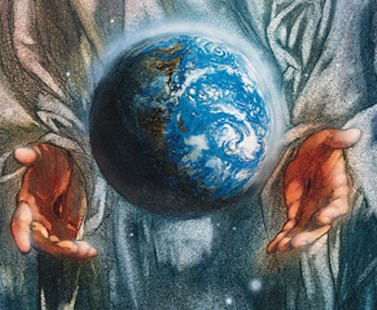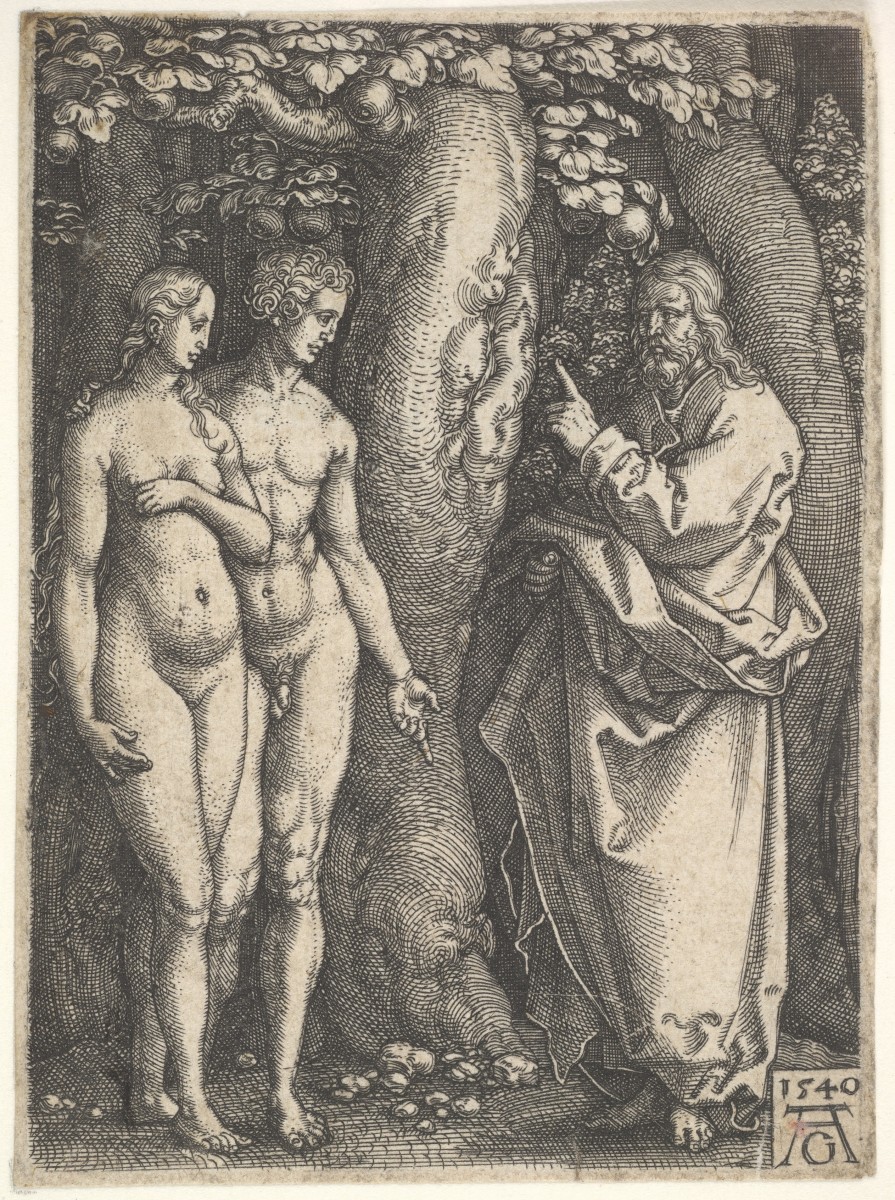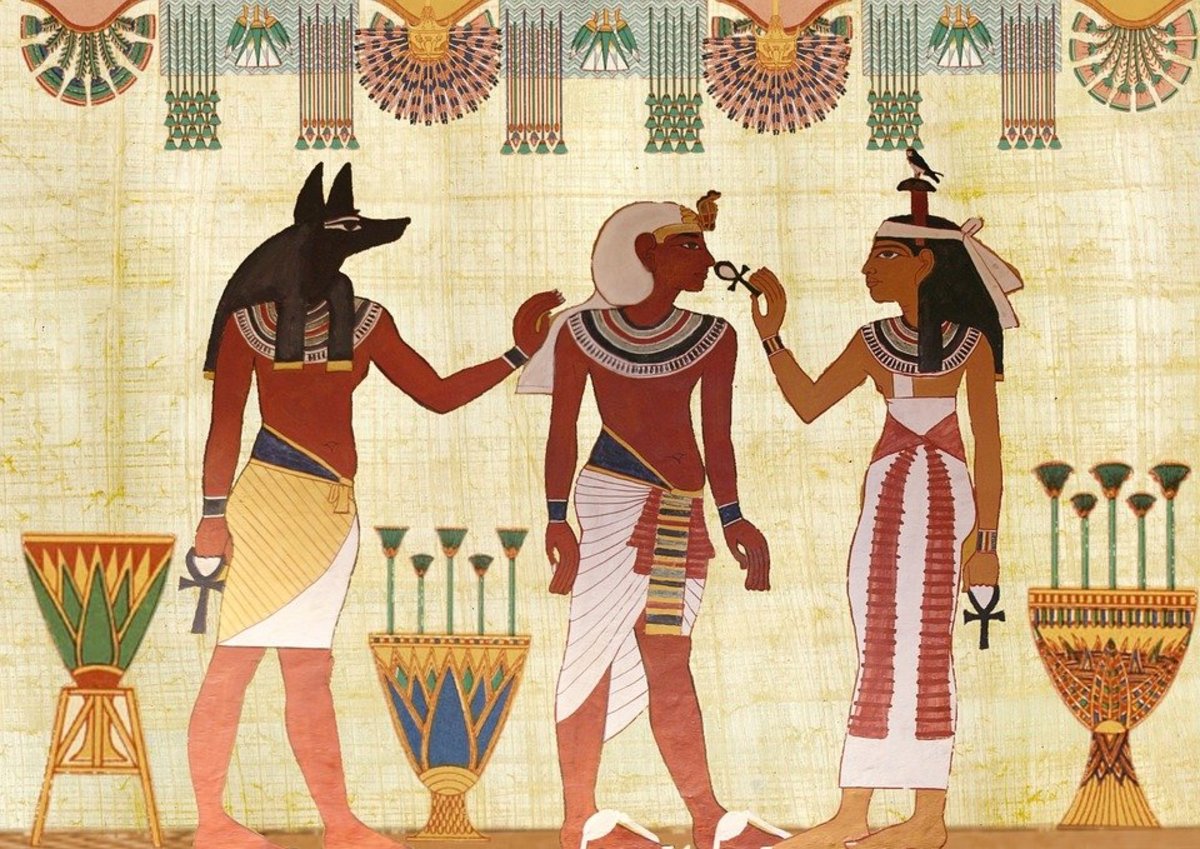In the Beginning, God - Part 6

- In the Beginning, God - Part 5
God's creation continues as He approaches his crowning work.
What was the process God used for Creation? Does Genesis 2 prove a second creation of God? Who was Lilith? Does she have a place in Scripture? We shall see as we continue in our study.
Did God set the universe in motion and then create through the process of evolution? There can only be three possible methods of creation:
1.) Atheistic evolution; Creation took place by accident. The Big Bang Theory teaches that all the matter in the universe was concentrated into one ball with a density of one hundred trillion times that of water called Ylem, a form of matter hypothesized by proponents of the Big Bang theory to have existed before the formation of the chemical elements. This matter reached a critical point and exploded, resulting in our universe with all the stars, galaxies, and planets we now have.
What are the odds of this just happening? Consider this question. How long would it take a million monkeys on a million typewriters to type out the first 10 words of Genesis 1:1? Answer: Imagine a rock reaching from earth to the nearest star 26 trillion miles away. Once every million years a small bird flies by and removes a grain of sand from the rock until the rock no longer exists. After he has removed four rocks this size, a monkey would have typed out Genesis 1:1.

This is absolutely nothing compared to a living cell developing by random processes. A free-living cell requires 239 individual protein molecules. What would be the chances of the first molecule developing by a random process? The least number of amino acids in a protein molecule is 410. The chances of this happening by chance are like flipping a coin 410 times and coming up heads every time.
Mathematically, the answer would be 10 to the 123rd power (1 followed by 123 zeros). Taking into consideration that 239 protein molecules are needed, this would then become 10 to the 12,345 power (1 followed by 12, 345 zeros).
2.) Theistic evolution – God caused the Big Bang, then evolution finished the work. The problem – This would require all the “chance” work of theistic evolution.
3.) Special Creation – God created the heaven and the earth just as He said.
Now, think for a moment on this. What is “nothing” and how could God create from it? What do you see when you see nothing? Imagine you are standing in a room with nothing. What do you see? No furniture? No windows nor curtains? How about no walls? No air. No dark? No light?
God does not live in the same sphere or dimension as we. Not to be confused with Sci-fi, but God exists outside of time, space, and matter – literally another dimension we know very little about. Jesus teaches His disciples to pray thus in Matthew 6:9 - “. . . Our Father which art in heaven, Hallowed be thy name.” The Bible does not mention much of this place called Heaven, God’s throne room.
In this area of life, there is no time, space, or matter for God created them all in Genesis 1:1). He spoke the worlds into existence (Genesis 1:3, 6, 9, 14, 20, 24, 25).
The Hebrew word for heaven in verse 1 is shâmayim shâmeh and seems to carry with it the meaning both of the clouds of heaven and the starry heavens. God’s throne room is in the third heaven, a place where eternity exists for we learn in Isaiah 57:15, “For thus saith the high and lofty One that inhabiteth eternity, whose name is Holy; Eternity constitutes a place of no beginning and no end. We live in a dimension of time, space, and matter. God does not. The only thing that existed before time, space, and matter was God’s eternal presence. God’s personality contains His omniscience, omnipotence, and omnipresence. He has the ability to create by the spoken word.
Today we hold the written Word in our hands. Make no mistake, we have been touched by the living Word, Jesus Christ!

Unfortunately, as we approach Genesis chapter 2, we will need to discuss another problem. Actually, the problem is an extension of the gap theory mixed with some mythology. We must learn to take the Bible at face value, and realize it means exactly what it says.
It is commonly taught that Genesis 2 explains the re-creation of the world and man. Different facts, they say, are given and do not line up with Genesis 1. Therefore, another creation took place. The first creation supposedly was before the fall of satan and before he caused the earth to become without form and void.
Yes, there are different facts revealed, but they certainly do line up with chapter 1. We are given more information in chapter 2 concerning the one and only creation.
We read in Genesis 2:1-3, “Thus the heavens and the earth were finished, and all the host of them. And on the seventh day God ended his work which he had made; and he rested on the seventh day from all his work which he had made. And God blessed the seventh day, and sanctified it: because that in it he had rested from all his work which God created and made.” God reiterates the fact of a six-day creation with rest on the seventh day.
I will not belabor the point except to say that the creation described in chapter 2 is the same creation mentioned in chapter 1 of Genesis.
Did I mention mythology? How do people get so off- track on clear Bible teaching? Enter – Lilith.
In Ariela Pelaia’s article, The Legend of Lilith: Origins and History, she mentions, “The biblical book of Genesis contains two contradictory accounts of humanity’s creation.” Then she goes on to mention in the same article, “Lilith is mentioned four times in the Babylonian Talmud, but it is not until the Alphabet of Ben Sira (c. 800s to 900s) that the character of Lilith is associated with the first version of Creation.”
It took nearly 3,000 years for Lilith to twist her way into Scripture. What about biblical interpretation prior to that? No mention of Lilith. Why? Because she never existed.
Ms. Pelaia erroneously concludes that chapters 1 and 2 of Genesis are contradictory, as do many others. Lilith was a way to reconcile this supposed discrepancy.
I will not spend much time in this area of controversy because it simply is not justifiable or worth the effort as it relates to our study in Genesis. But a quick summary of the story of Lilith is this.
Lilith was Adam’s first wife, created along with him and at the same time in Genesis 1:27. She rebelled against Adam and God and ran from both. In the process, she became demonized and sought to murder babies and infants. God then created Eve to take her place in Genesis 2:20-24. Another sick interpretation of Genesis 1:27 is that God created an androgynous being, half-man, and half-woman who God later split into two beings.
The fact of Scripture is that it harmonizes itself. There is no need to read into Scripture what is not there. Chapter 2 was never meant to repeat chapter 1, but rather its purpose is to give more information and add to the description of chapter 1.
That does not seem to be too awfully hard to explain or understand, but satan attacks the book of Genesis over and over. Genesis is the foundational book of the entire Bible. If it can be discredited, cheapened, or destroyed in any way, satan has won a great battle, for he effectively opens the door to discredit, cheapen, or destroy the rest of the book as well. The attacks on Genesis are worth defending.
- In the Beginning, God - Part 7 - HubPages
In the Beginning, God - Part 6Does Genesis 2 prove a second creation of God? Who was Lilith? Does she have a place in Scripture? We shall see as we continue in
© 2018 William Kovacic








